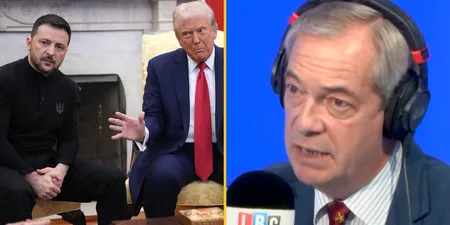What’s the first football game you can remember playing?
Maybe it was FIFA Road to World Cup 98, with the indoor pitches. Or Championship Manager 01/02 with stars like Cherno Samba.
Whatever it was, it probably features at the National Football Museum’s ‘Pitch to Pixel’ exhibition, which celebrates the marriage of football and gaming.
JOE caught up with curator John O’Shea to find out more about the exhibit, which opens to the public on October 23.
Fingers & thumbs at the ready for the launch of #PitchToPixel The World of Football Gaming tonight! #PressPlay pic.twitter.com/DGz3nZI9h3
— Nat. Football Museum (@FootballMuseum) October 22, 2015
“The overarching idea is the overlap with gaming and football, and if life is imitating art,” he explains.
“We’ve taken two key themes – the first of these is simulation, such as the way FIFA-type games are emulating players’ likenesses and movements, and database-type games like Football Manager are modelling reality.
“The other side is obsession – I read an article about FIFA 16 that said we can only properly understand the game after playing for 300 hours – people spend months or years in the game environment, and they learn about players. Not even just real players either, Football Manager newgens too.
Indeed, one of the elements of the exhibit is a shirt and matchday programme created in honour of fictional footballer Ivica Strok.
Strok broke countless records on Football Manager, and Jonny Sharples – the gamer who ‘discovered’ the Croatian creation – provided the museum with several artefacts.
Joining my shirt at The National @FootballMuseum will be a copy of my testimonial programme. pic.twitter.com/AHVSWKrUPZ
— Ivica Strok (@IvicaStrok10) September 30, 2015
“Back in the 60s there was a big thing about whether we could have a manufactured pop band,” O’Shea says.
“That has now been answered, but now there’s the question of whether people could support virtual teams or players, will it matter if they’re real, and that’s the key question with Strok.”
Combining this cult of personality with a football framework has also featured in platform games like Go! Go! Beckham! for the GameBoy Advance and Brazil midfielder Felipe Melo’s recent mobile game in which he fights off zombies. The crossover has reached levels we could only have dreamed of before the turn of the century.
Best faux-Japanese game cover art? Surely @denkigames' Go! Go! Beckham! for Game Boy Advance (http://t.co/S5m6RDJzS5) pic.twitter.com/tgz84o3jX8
— Simon Carless (@simoncarless) February 16, 2015
It is this level of overlap between football and gaming that convinced the museum to launch the exhibition now, and it’s not just limited to cults around in-game characters.
For example, O’Shea notes that we’re approaching the stage where the Football Manager database is richer than the Premier League’s own one, and top players pay genuine interest to their FIFA stats.
AFC Wimbledon striker Adebayo Akinfenwa told JOE of his pride at being named the strongest player on the game, but other footballers have been a little less complimentary.
https://instagram.com/p/8DkrdSiRxz/?taken-by=realakinfenwa
Pitch to Pixel includes a FIFA 15 stats board which England defender Rio Ferdinand ripped in half in protest at his pace rating being too low, and many other Premier League stars will play the game regularly and check their own ratings before anything else.
Of course, the newest state-of-the-art games are not the only ones to feature in the exhibition. Pitch to Pixel covers several decades of football and gaming, all the way back to 1978’s Mattel Intellivision Soccer, which is widely thought to be the first of its kind.
A huge number of the games featured are playable, with consoles like the Spectrum and early Nintendo models allowing fans to try out games from another generation.
Naturally, some of these are far more sophisticated than others, with Nintendo World Cup a prime example of how far the medium has come in the space of just a few years.
“It came out before the big franchise agreements so wasn’t linked to real teams or player names,” O’Shea explains.
“With that game, if you tackled someone you couldn’t get a red card but the player would lie down injured.
“There was a time in the 80s when everyone was trying to get on the bandwagon – Emlyn Hughes, Kevin Keegan, et cetera – everyone trying to get the formula and then in the early 90s it was crystallised.”
The game that changed it all was Sensible Soccer. Released in 1992, it encompassed aspects of player-focused and manager-focused games and acted as a crossroads from which the two formats diverged.
Since then, we have seen the Football Manager and FIFA series become the dominant players in their respective markets, though plenty of contenders have emerged.
https://instagram.com/p/87hhx_zdCp/?taken-by=easportsfifa
One of the next steps, O’Shea believes, is the incorporation of diversity into the gaming world.
He speaks highly of FIFA’s approach to introducing female players, though is keen to point out they’re not the first to go down this route.
But it seems we’ve moved on a little from Sega Dream Soccer – the first game to include women’s teams – and the bizarre Mia Hamm Barbie doll.
“There have been issues in gaming with the representation of women,” O’Shea says.
“FIFA has been bold in waiting and doing it right. It ties in well with the style of play they are looking to have, and this could be a breakthrough moment.
So what comes next? Immersive gaming? Virtual reality and football? We can’t wait to find out.
Pitch to Pixel will run at the National Football Museum in Manchester from October 23-June 6. For more information click here.



































